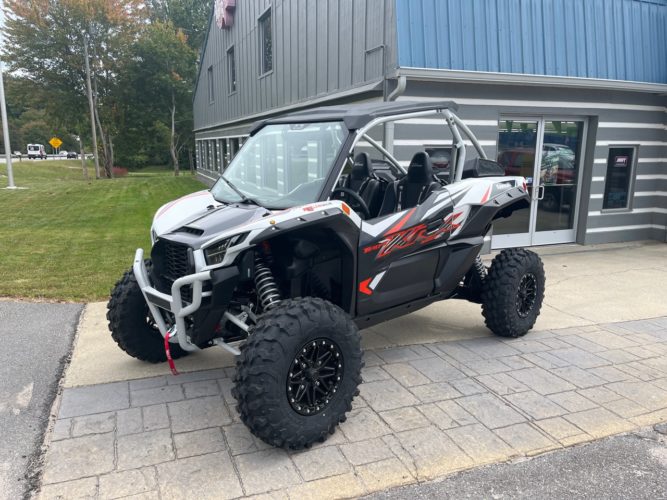
The popularity of off-road vehicles, particularly side-by-sides, has soared in recent years. These rugged and versatile machines are cherished for their ability to conquer challenging terrains and provide thrilling outdoor adventures. However, many enthusiasts dream of taking their side-by-sides from the trails to the streets. While it’s not an impossible feat, legalizing a side-by-side for on-road use involves several steps and requirements. In this blog post, we’ll delve into the process of legalizing side-by-sides for on-road use and what’s involved in making them street-legal.
1. Understand Your Local Laws
The first step in the process of legalizing a side-by-side for on-road use is to understand the laws and regulations in your specific location. Laws regarding off-road vehicles, including side-by-sides, vary significantly from state to state and even within municipalities. You’ll need to research the specific requirements and restrictions that apply to your area. Common regulations you may encounter include minimum vehicle safety standards, equipment requirements, and emissions standards.
2. Check Manufacturer Compliance
Before you can take your side-by-side on the road, you need to ensure it complies with your local vehicle standards. Some manufacturers offer models that are specifically designed for on-road use and meet the necessary safety and emissions standards. It’s advisable to contact your side-by-side’s manufacturer or dealership to inquire about models that are suitable for on-road use.
3. Vehicle Modifications
If your side-by-side doesn’t meet the on-road requirements right off the bat, you’ll likely need to make some modifications. Common modifications include adding turn signals, headlights, brake lights, mirrors, and a horn to ensure your vehicle meets safety and visibility standards. Additionally, you may need to install a speedometer and odometer to comply with speed regulations.
4. Register Your Side-by-Side
Registering your side-by-side is a crucial step in the process of making it street-legal. This typically involves visiting your local Department of Motor Vehicles (DMV) or equivalent agency and providing the necessary documentation. You’ll likely need proof of ownership, a bill of sale, and the manufacturer’s statement of origin. Be prepared to pay registration fees and any applicable taxes.
5. Obtain Insurance
In most areas, insuring your side-by-side is mandatory for on-road use. Contact your insurance provider to discuss options for coverage. Keep in mind that insurance rates can vary depending on factors like your driving history, the value of your side-by-side, and the coverage you choose.
6. Pass Inspection
To ensure your side-by-side meets all safety and emissions standards, you’ll need to pass an inspection. The inspection process may vary depending on your location, but it typically involves a thorough examination of your vehicle to ensure it complies with the necessary regulations. This may include checking your lights, brakes, tires, and emissions.
7. Obtain a License or Permit
Depending on your jurisdiction, you may need a special license or permit to operate your side-by-side on public roads. This requirement can vary widely, from a standard driver’s license with specific endorsements to a separate off-road vehicle license. Make sure to check with your local DMV or equivalent agency to understand what’s needed.
8. Stay Informed and Compliant
Once you’ve successfully legalized your side-by-side for on-road use, it’s essential to stay informed about any updates or changes to local regulations. Compliance with safety standards and emissions requirements is an ongoing responsibility. Regularly maintain your vehicle, including its added on-road components, to ensure it continues to meet all necessary standards.
9. Enjoy the Ride Responsibly
Now that your side-by-side is street-legal, you can enjoy the freedom of exploring both off-road and on-road terrain. However, remember to operate your vehicle responsibly and safely. Follow all traffic laws, wear appropriate safety gear, and be considerate of other road users.
Legalizing a side-by-side for on-road use involves a series of steps and requirements that vary depending on your location. It’s essential to research and understand the specific laws and regulations that apply to your area, modify your vehicle as needed, and complete the necessary paperwork and inspections. With diligence and patience, you can transform your off-road side-by-side into a street-legal machine, opening up a world of new adventures and possibilities. Enjoy the ride!

